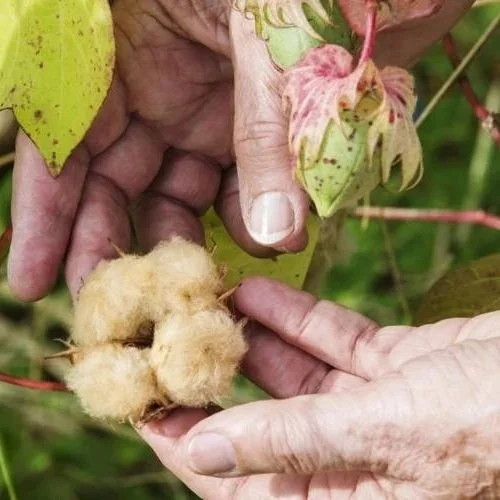It has been quite a journey to have been a part of the most evolutionary period in cotton insects. I began my career as part of the new U.S. Department of Agriculture-Extension cotton IPM educational initiative in 1972 when boll weevils were the dominant cotton insect in Alabama.
Read MoreThe U.S. Cotton Trust Protocol has been approved as a standard for sustainable cotton by Siegelklarheit, an initiative of the German Federal Government. By helping consumers to better understand environmental and social labels, Siegelklarheit wants to contribute to more sustainable purchasing decisions.
Read MoreCotton planting in Louisiana is nearing the end. We might still have a few growers trying to finish planting and/or replanting, but for the most part, I’d say we’re about 98% complete.
Read MoreThe U.S. Cotton Trust Protocol announced streamlined, three-year grower enrollment for the 2022 through 2024 crops. The new process is designed to be quick, easy and efficient, thereby allowing grower member cotton to enter the supply chain sooner.
The Trust Protocol’s mission is to bring quantifiable, verifiable goals and measurement to key sustainability metrics of U.S. cotton production with a vision where full transparency is a reality and continuous improvement to reduce our environmental footprint is the central goal.
Read MoreIn any ‘normal’ crop year, replanting costs play a substantial role in estimating the additional production cost per unit (bushel). However, inflationary pressures and input price volatility observed since the fall of 2021 have cut into expected profit margins for 2022.
Read MoreLouisiana cotton planting is nearly complete. The state is expected to nearly double its acreage this year because of good cotton prices, and the high cost of nitrogen fertilizer has some farmers switching acres from corn to cotton. LSU AgCenter reporter Craig Gautreaux has this report.
Read MoreThe U.S. Cotton Trust Protocol announced that grower participation for the 2021/22 crop doubled since the program’s pilot last year.
Read MoreDuring the next several weeks, the U.S. Department of Agriculture’s National Agricultural Statistics Service (NASS) will conduct two major mid-year surveys, the June Agricultural Survey and the June Area Survey.
Read MoreThis report contains the results from the 2022 May Ag Yield, 2021 Cotton Ginnings, and Objective Yield surveys.
Read MoreThis report contains the results from the 2021 December Agricultural and Row Crop County Agricultural Production surveys.
Read MoreNearly all the 2022 crop is in the ground with some of the earliest planted cotton in the western reaches of the state nearing first bloom. However, most of the crop across Arizona is not even to first square yet.
Managing very young cotton is critical to the eventual success of your crop.
Read MoreSouth Louisiana's native brown cotton is heading to the Smithsonian Folklife Festival and will also be featured at a United Nations summit next month.
Read MoreCotton acreage in Louisiana is expected to increase substantially this year. Now is a great time to review a few key recommendations to ensure the 2022 season gets off to a great start.
Read MoreThe 1996 Farm Bill requires The Cotton Board to conduct an independent, third-party evaluation every five years of the effectiveness of the Cotton Research & Promotion Program (the Program). The most recently concluded evaluation reflected well on the Program’s effectiveness both over the long-term (1986-2019) and over the last five years (2015-2019).
Read MoreThe cotton leafroll dwarf virus causes yellowing and distortion of leaves and is believed to be vectored by the cotton aphid (Aphis gossypii) during feeding.
Read More













